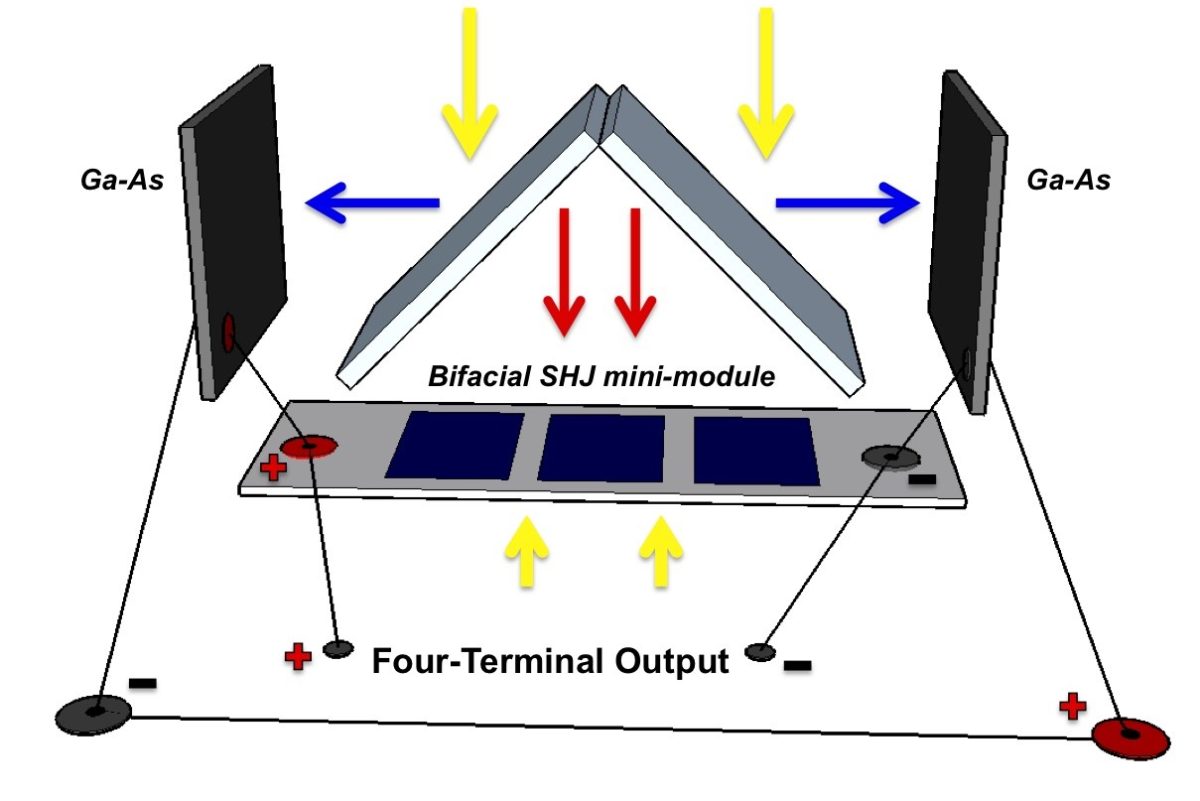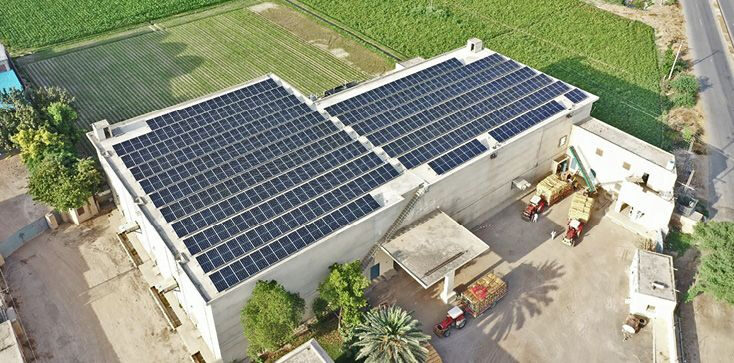A research team from the Institute for Microelectronics and Microsystems (IMM) of the Italian National Research Council (CNR) has developed a four-terminal bifacial multijunction PV device consisting of two mini modules based on gallium arsenide (GaAs) and a silicon heterojunction technology, respectively.
“Our device was not designed to achieve the maximum possible power conversion efficiency, but represents a prototype to study the applicability of the 4T multijunction approach and its compatibility with bifacial modules,” research co-author Andrea Scuto, told pv magazine. “It is suitable to illustrate the advantages of the 4T architecture including the bifacial technology already in production in Italy,” he added referring to the module production of Enel Green Power, which also partnered in the research.
In the paper “Outdoor performance of GaAs/bifacial Si heterojunction four-terminal system using optical spectrum splitting,” published in Solar Energy, the scientists explained that in the 4T design the bottom and top cells are not directly stacked and connected in series, but are connected in parallel. This architecture reportedly offers the advantage of considerable intrinsic robustness to variations in the solar spectrum.
“For such reason, the 4T configuration is much more robust than the tandem to changes of solar spectrum or to the bifaciality use,” the researchers explained. “4T devices also have a higher degree of flexibility for the choice of materials that best absorb the incident spectrum since no direct cell stacking and short-circuit current matching is necessary. Only the voltage matching of the bottom and top PV module has to be performed.”
The prototype was built with a dichroic mirror on the front of the device that splits the incident light. In this way, the GaAs mini-module is able to transform the visible portion of the solar spectrum, while the bifacial SHJ cell collects the incident infrared light on the front, and the light reflected from the ground on the rear of the device.
The system was tested in outdoor conditions and, throughout a full day, it exhibited a power conversion efficiency ranging from 21.3% to 25.4%, with the efficiency raising by 17% (relative) when it went from monofacial to bifacial operation. “We have acquired irradiance data and monitored the spectral distribution of the solar light during the day, observing a variation of 44% of the albedo and a significant shift of the solar spectrum towards infrared wavelengths,” the Italian group stated.
“The present system cannot effectively harvest diffuse light in the blue part of the solar spectrum due to the dichroic mirror, and the supporting structure increases the encumbrance of the system: for these reasons the device shouldn’t be considered for an industrial application. But the concept may be applied to more effective designs both in terms of form factor and cost” the authors specified.
This content is protected by copyright and may not be reused. If you want to cooperate with us and would like to reuse some of our content, please contact: editors@pv-magazine.com.




2 comments
By submitting this form you agree to pv magazine using your data for the purposes of publishing your comment.
Your personal data will only be disclosed or otherwise transmitted to third parties for the purposes of spam filtering or if this is necessary for technical maintenance of the website. Any other transfer to third parties will not take place unless this is justified on the basis of applicable data protection regulations or if pv magazine is legally obliged to do so.
You may revoke this consent at any time with effect for the future, in which case your personal data will be deleted immediately. Otherwise, your data will be deleted if pv magazine has processed your request or the purpose of data storage is fulfilled.
Further information on data privacy can be found in our Data Protection Policy.